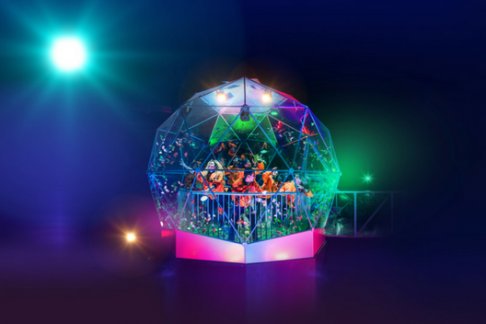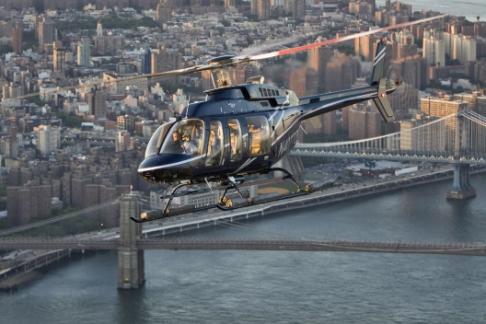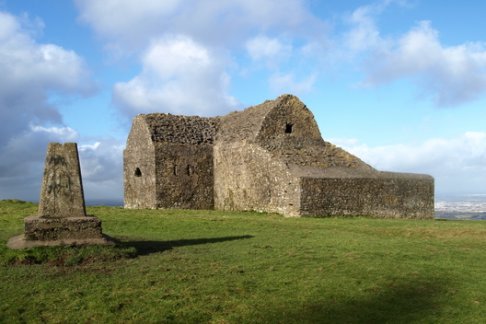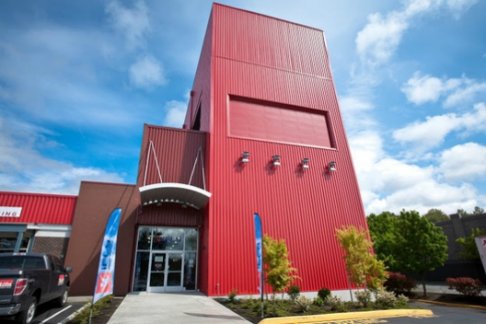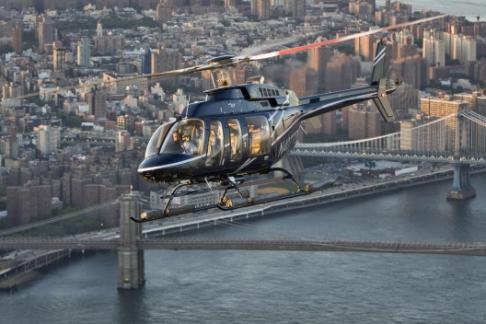
Helicopter Flight Services - The Ultimate Tour + 9/11 Memorial Museum
OverView
Crystal Maze Live - London - SALE Ticket
Important information before your arrival at The Crystal Maze LIVE Experience London: Please arrive at least 15 minutes before the time shown on your tickets. Latecomers may not be admitted to the attraction. Your ticket is non refundable, non exchangable and non-transferrable. For the safety of all visitors, The Experience reserves the right refuse admission, or may on occasion conduct security searches. The Experience reserves the right to alter or vary the content or timing of the whole or part of the show due to circumstance beyond their reasonable control without being obliged to refund or exchange tickets. Visitors will not be allowed to join The Experience without a ticket, please ensure you have this ticket on either a phone or print out on the day of your visit. No filming or photography is allowed in the maze. Phones are not allowed in the maze. You must be 18 years or older to play the maze. If you have a disability or a pre existing injury please contact the guest services team prior to your visit. Pregnancy strictly prohibits participation or entrance to the maze. Open-toed shoes or high heels are not permitted. Trainers or pumps are recommended. Alcohol must not be consumed prior to the maze experience. If you are found to be under the influence of alcohol you will not be permitted to the maze.
iFLY Ontario- Group Flyers
iFLY welcome flyers from 3 to 103. If you have reasonable health and fitness you can fly. But do check the criteria below before you purchase tickets. There are a few exceptions: Flyers must be over 3 years of age. Participants must weigh less than 300 pounds. Participants who weigh between 260 and 300 pounds must bring this to the attention of an iFLY representative as additional restrictions and instructor scheduling limitations may apply. Women who are pregnant should not fly. Folks with recent back, neck and heart problems should check with a doctor before flying. iFLY recommends people with prior shoulder dislocations DO NOT FLY! Click below for a complete list of restrictions: https://www.iflyworld.com/flight-restrictions-and-requirements/
Helicopter Flight Services - The Ultimate Tour
Helicopter Flight Services is proud to operate top-of-the-line, high-performance Bell407 (up to 6 pax) and EC130 (up to 7 pax) helicopters. The spacious cabins and high visibility windows have been specially designed for sightseeing which allows 180 degree views; no other helicopter operator in New York City can offer these unobstructed views. The Bell and EC130 have proven to be safe, fast and powerful helicopters giving an incredibly smooth ride in virtually all conditions. Pilots are specially trained on both types of helicopters and the state-of-the-art safety system, TCAS. TCAS is an onboard radar system that allows pilots the advantage of managing the air traffic around them. All passengers enjoy their flight with voice interactive headsets to hear and speak to the pilot and each other.
Incredible Adventures - Lake Tahoe Winter Adventure Tour - 3 Days
Activities: Hiking Snow Sports Photography Adventure Wildlife & Nature Eco/Sustainable Includes: Complimentary pick up/drop off from the San Francisco Hilton hotel (Mason St. entrance) Hotel accommodations (double occupancy same-sex or couple share, single occ supplement applies for single bookings) Narrated guided tour by a full-time professional, knowledgeable guide See Lake Tahoe, Donner Pass, Sacramento, Truckee, the Sierra Mountain Range, Emerald Bay, 2 Ski Resorts, and more! Transportation throughout tour in biofuel mini-coach Not Included: Meals (stops will be made to purchase food). Optional activity entrance fees (Ski Resort access, Lift tickets, Lessons, etc) Gear Rental (Ski/Snowboards, Snow Shoes, Winter Clothing/Boots/Goggles/etc) Single occ supplement for private room for 1 person Guide gratuity (optional) Suggested Gear List: Camera & charger Small day pack Change of clothes for 3 days Swimwear, towel Toiletries Sun protection, hat Water bottle Warm layers (evenings can be cooler) ADDITIONAL Gear For Partaking in Snow Sports Raincoat/jacket Hiking boots or durable sneakers (preferably Gortex or waterproof) Warm layers (long underwear & wool fleece suggested) Waterproof jacket/pants for winter conditions Gloves, wool socks and a hat (75% of your body heat is lost through your hands, head, and feet) Ski/Snowboard Gear (not provided) SAMPLE ITINERARY – DAY 1 (THURSDAY) SAN FRANCISCO TO SOUTH LAKE TAHOE/HEAVENLY MOUNTAIN RESORT 10:00am: Pick up from San Francisco Hilton Hotel (Mason Street entrance) Morning: Buckle up! After departing San Francisco, you’ll head through California’s capital city, Sacramento, through the Sierra foothills and into the famous Gold Rush Country, cresting a high mountain pass within the Sierra Nevada. Then we’ll wind our way through large pine forests, before dramatically descending into South Lake Tahoe. Afternoon: In the evening, we’ll settle into our centrally located hotel and then head out to happy hour with the Apres Ski crowd at the base of Heavenly Mountain Resort before a comfy night’s rest. SAMPLE ITINERARY – DAY 2 (FRIDAY) SOUTH LAKE TAHOE: CHOOSE YOUR ADVENTURE All Day: While masses of people are piling into their cars to head to the mountains, you’ll be on the first lift up to carve the groomers, or to get fresh tracks in that Heavenly powder! Don’t worry if you’re not really into skiing, our guides will offer the opportunity to go out on a fabulously scenic drive on the mountain roads surrounding Lake Tahoe, or maybe even a snowshoe adventure! If you’re really just here for the casinos, they’re open 24 hours, and you’re welcome to see if Lady Luck is on your side all day if you like! Don’t want to miss out on any of it? No problem, we’re flexible: our guides know their stuff, and we’ll help you fit in a scenic drive in the morning, get yourself a half day ticket on the mountain, and then hit the casinos all night long! SAMPLE ITINERARY – DAY 3 (SATURDAY) SOUTH LAKE TAHOE TO SQUAW VALLEY & TRUCKEE, CA Morning: We’ll hit the road early this morning and head toward historic Tahoe City taking in views of Emerald Bay before heading toward the famous Squaw Valley Resort. If you’re heading up onto this epic ski and snowboarding destination today, you’ll be glad if you dusted off the cobwebs on Heavenly yesterday. This place is the real deal, where you can often see extreme athletes pushing the envelope, soaring from the cliffs as you ride up the famous KT-22 Express. Make sure you bring your swimsuit too: the High Camp Pool and Hot Tub high on the resort is open for business…all winter long! This side of the lake also offers amazing snowshoeing or cross country skiing opportunities as well. Once again, you’ll be offered the choice to head up on the ski hill, or we’ll take you out on the trails through Stanislaus National Forest or maybe a snowshoe hike near the Donner Memorial State Park and explore the history of the ill-fated pioneers of the Donner Party as they struggled to travel west in their wagons and became stranded in the winter of 1846-47. Afternoon/Evening: After a full day of winter adventures, we’ll head into the historic town of Truckee, CA to check into our accommodation for the evening, and then head out for dinner and a night on the town with the locals. SAMPLE ITINERARY – DAY 4 (SUNDAY) TRUCKEE TO SAN FRANCISCO Morning: After three days of taking advantage of some incredible Sierra Nevada fun, we will be headed back down the pass toward the city by the bay. While traveling back through the beautiful foothills of California, you’ll experience more of the beauty witnessed by our country’s first western explorers. We’ll make some final stops at small town favorites such as Ikeda’s Country Pie Shop in historic Auburn, California as well as driving through the state capital, Sacramento. Afternoon (approx 3:30pm): After crossing the iconic Bay Bridge, you will be dropped off at our San Francisco hotel around 3:30 PM for check in… as well as some much needed rest before heading back out to catch some more of your favorite sights around the city. **Sample Itineraries: Please note that due to rapidly-changing conditions beyond our control (weather, crowds, traffic) and the small size of our vehicles/groups, our guides have the flexibility to adjust your itinerary to best suit the group’s needs. While we guarantee we’ll do our best to provide you with all of the highlights within this Lake Tahoe Winter Adventure Tour itinerary (conditions permitting), we don’t guarantee them in this specific order. **
The Hellfire Club Tour Hidden Dublin
Trip Itinerary Board our private Hellfire Express to hear some of the haunted legends that abound further afield than Dublin City Centre at famous landmarks such as St Patrick's Cathedral, Rathfarnham Castle and Kilakee House as we wind our way along the path towards the lonely dark Dublin Mountain range. Arrive at the Hellfire Club – we disembark the bus and walk up to one of Ireland’s most lonely and infamous places. The burnt out shell of this haunted hunting lodge dating from 1725 is known for its association with Satanism, the supernatural and the occult. Be warned! Although this desolate place is miles from civilisation it has witnessed activities that should not be seen by anyone on this earthly plain. It is not unusual for visitors to experience head and chest tightness as their subconscious picks up on the horrors that this lonely hill has witnessed, it is not a place for the faint hearted! Once we have arrived you are rewarded with the best view of Dublin in the world! Don't forget your camera - a must for all budding photographers. See why this is the ideal location renowned by the darker side of Dublin gentry in the 1700s. Our talented storyteller will recount the history of this place, including the destruction of the ancient megalithic monuments, the exhumation of the demonic statue and dwarf skeleton, to the evil rituals and events that took place here such as the black masses, human and animal sacrifices, and the infamous card game with the “cloven-hoofed visitor.” The historical "Haunted Hellfire" excursion will last approximately 2.5 hours (inclusive of travel time to and from the Dublin Mountains) Feel free to bring your own torch if don't have a phone. We will however be insisting however that all mobile phones and lights be turned off at certain points on the tour... for your safety! Finish back at O'Sheas, where you can avail of our special drinks promotions and dance the night away to live music. Why not avail of our "Pour your own Pint Experience" at O'Sheas: A Pint of Guinness, A Photograph & Certificate - A Pint of Guinness, A Photograph & T-Shirt & Certificate - Fingers food for group - just per head Pint & Stew Please note that the above extras are not included in your original ticket price. What you need to bring with you: 1) Your ticket / Online Payment Receipt Please bring the printout of your online booking or entry may be refused. You can turn up on the night for any tour, but preference will be give to online bookings. 2) Warm Clothes Please bring very warm gear as much of the tour takes place at the summit of Mont Pellier in the Dublin Mountains and we can assure you it will be cold up there! You can always take off layers but you can't add any more! 3) Wet Weather Gear Be prepared. Please remember that it does rain in Ireland. You will not enjoy the tour if you are freezing cold and wet so please bring umbrellas and appropriate gear. We run rain, hail or shine. 4) Sturdy Walking Shoes The Hellfire Club Dublin is perched atop a lonely peak in the mountains. To get there we need to walk for approx 20 minutes uphill. Please bring appropriate shoes for this! You will not enjoy yourself if your feet are sore and/or cold. This is an outdoor walking tour, and a basic level of fitness is required. 5) Flashlights or Mobile Phone with a similar facility There are no public artificial light sources in the Dublin Mountains, if you do have a handy flashlight please bring it along as the track up the mountain is unsealed and we may be walking in darkness at some points.
iFLY Seattle - Group Flyers
iFLY welcome flyers from 3 to 103. If you have reasonable health and fitness you can fly. But do check the criteria below before you purchase tickets. There are a few exceptions: Flyers must be over 3 years of age. Participants must weigh less than 300 pounds. Participants who weigh between 260 and 300 pounds must bring this to the attention of an iFLY representative as additional restrictions and instructor scheduling limitations may apply. Women who are pregnant should not fly. Folks with recent back, neck and heart problems should check with a doctor before flying. iFLY recommends people with prior shoulder dislocations DO NOT FLY! Click below for a complete list of restrictions: https://www.iflyworld.com/flight-restrictions-and-requirements/

